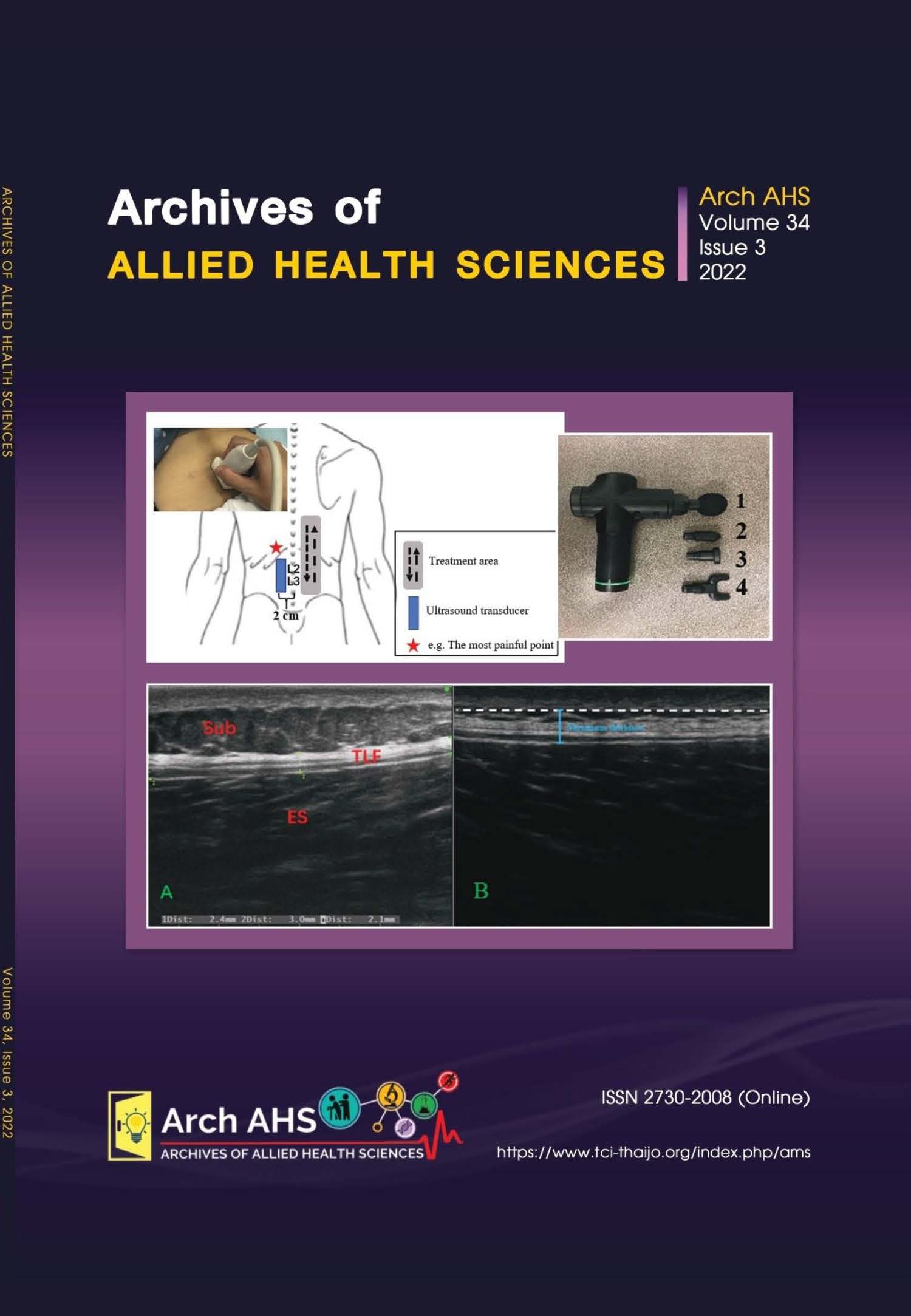Establishment of in-house telomere length measurement using qPCR
Main Article Content
Abstract
Telomere is a nucleoprotein complex at the ends of chromosomes which can be used as a biomarker for aging and health condition. The gold standard method for telomere length measurement is quite a complication. Recently, quantitative polymerase chain reaction (qPCR) is a widely used method for molecular study with high throughput and cost-effectiveness. This study aimed to develop the in-house qPCR for estimating telomere length in kilobase in healthy samples. The in-house qPCR was established for the telomere gene and 36B4 gene. The analytical performance was verified prior to applying to 190 healthy participants, 139 females and 51 males. The telomere length (kilobase) was calculated and compared to the reference value. The results for telomere length by in-house qPCR method were 7.48 ± 1.78 kb for males and 7.53 ± 1.45 kb for females with the range of 4.66 – 10.69 kb and 4.03 – 11.50 kb, respectively. A total of 190 participants showed moderate correlation with a reference value at R2 = 0.5672. The Bland-Altman analysis from two different methods showed only 5.26% (10 out of 190) were out of ± 25% bias in females. The in-house qPCR was successfully demonstrated for telomere length measurement with an acceptable performance compared to the reference values. However, the validation in more clinical samples should be performed in further study.
Article Details

This work is licensed under a Creative Commons Attribution-NonCommercial-NoDerivatives 4.0 International License.
References
Jafri MA, Ansari SA, Alqahtani MH, Shay JW. Roles of telomeres and telomerase in cancer, and advances in telomerase-targeted therapies. Genome Med 2016; 8(1): 69.
Vera E, Blasco MA. Beyond average: potential for measurement of short telomeres. Aging 2012; 4(6): 379–92.
Mensà E, Latini S, Ramini D, Storci G, Bonafè M, Olivieri F. The telomere world and aging: Analytical challenges and future perspectives. Ageing Res Rev 2019; 50: 27–42.
Cawthon RM. Telomere measurement by quantitative PCR. Nucleic Acids Res 2002; 30(10): 47.
Montpetit AJ, Alhareeri AA, Montpetit M, Starkweather AR, Elmore LW, Filler K, et al. Telomere length: a review of methods for measurement. Nurs Res 2014; 63(4): 289–99.
Alhusseini NF, Madboly AG. Telomere length measurement by quantitative real-time PCR: a molecular marker for human age prediction. Am J Biochem Biotechnol 2016; 12(1): 64–71.
O’Callaghan NJ, Fenech M. A quantitative PCR method for measuring absolute telomere length. Biol Proced Online 2011; 13(1): 3.
Karlen Y, McNair A, Perseguers S, Mazza C, Mermod N. Statistical significance of quantitative PCR. BMC Bioinformatics 2007; 8: 131.
Gutierrez-Rodrigues F, Santana-Lemos BA, Scheucher PS, Alves-Paiva RM, Calado RT. Direct comparison of flow-FISH and qPCR as diagnostic tests for telomere length measurement in humans. PloS One 2014; 9(11): 113747.
Bae CY, Kang YG, Piao MH, Cho B, Cho KH, Park YK, et al. Models for estimating the biological age of five organs using clinical biomarkers that are commonly measured in clinical practice settings. Maturitas 2013; 75(3): 253–60.
Zhou C, Steplowski TA, Dickens HK, Malloy KM, Gehrig PA, Boggess JF, et al. Estrogen induction of telomerase activity through regulation of the mitogen-activated protein kinase (MAPK) dependent pathway in human endometrial cancer cells. PLoS ONE 2013; 8(2): e55730.
Vidacek NŠ, Nanic L, Ravlic S, Sopta M, Geric M, Gajski G, et al. Telomeres, nutrition, and longevity: can we really navigate our aging? J Gerontol A Biol Sci Med Sci 2017; 73(1): 39–47.
Zanet DL, Saberi S, Oliveira L, Sattha B, Gadawski I, Côté HCF. Blood and dried blood spot telomere length measurement by qPCR: assay considerations. PLoS ONE 2013; 8(2): e57787.
Thomas P, O’ Callaghan NJ, Fenech M. Telomere length in white blood cells, buccal cells and brain tissue and its variation with ageing and Alzheimer’s disease. Mech Ageing Dev 2008; 129(4): 183–90.
Gadalla SM, Cawthon R, Giri N, Alter BP, Savage SA. Telomere length in blood, buccal cells, and fibroblasts from patients with inherited bone marrow failure syndromes. Aging 2010; 2(11): 867–74.


